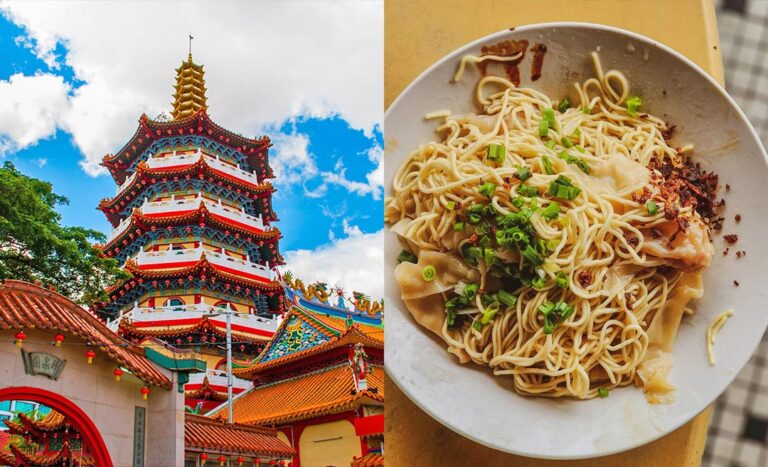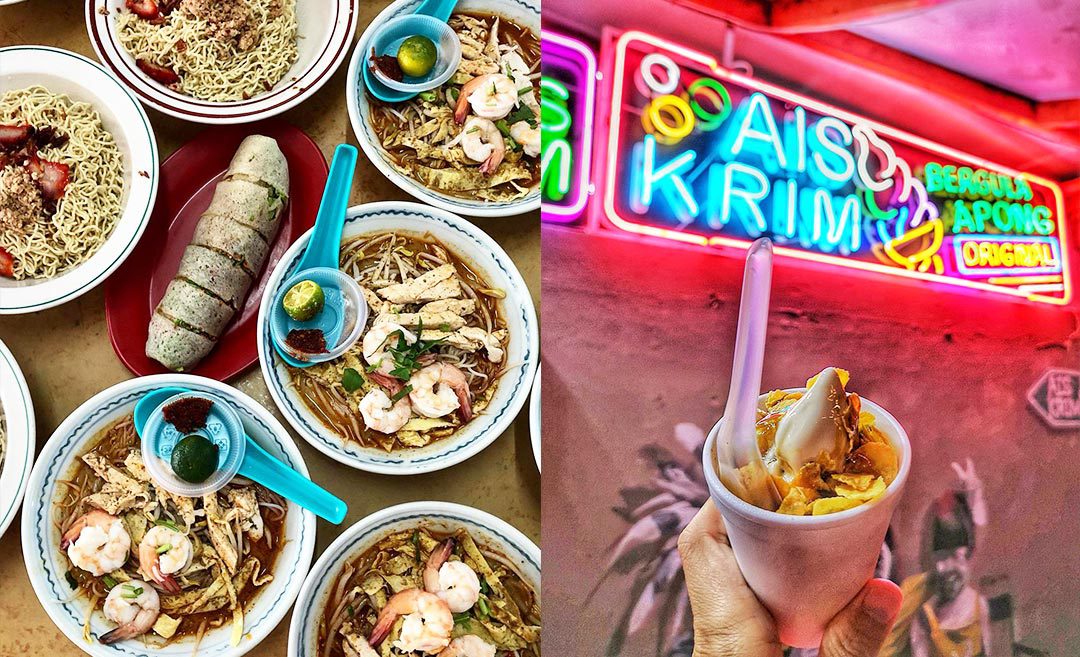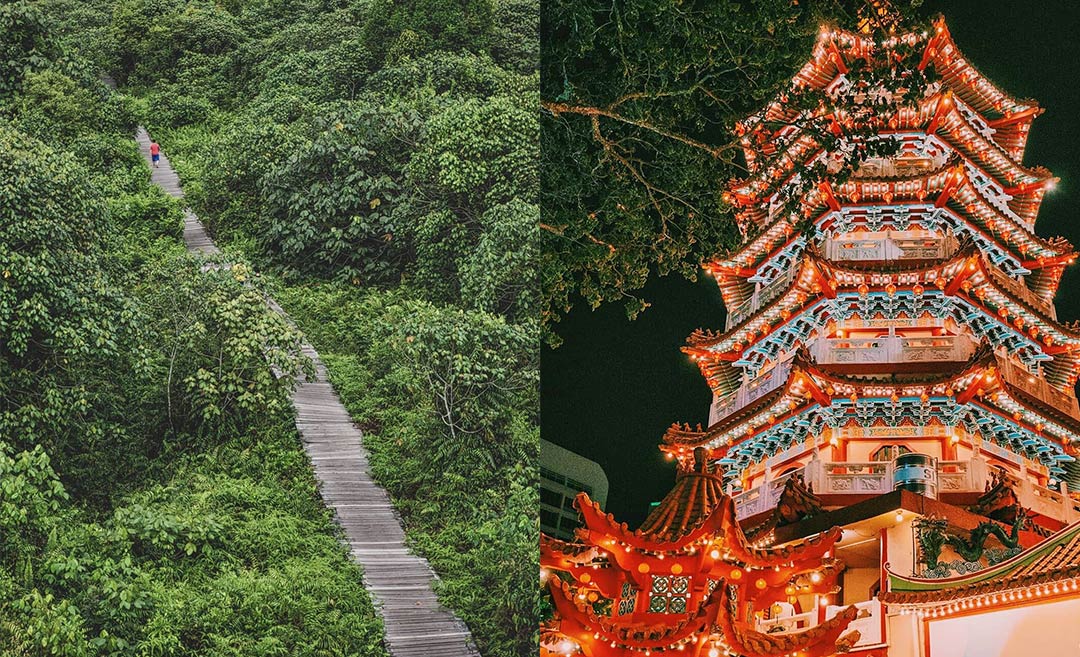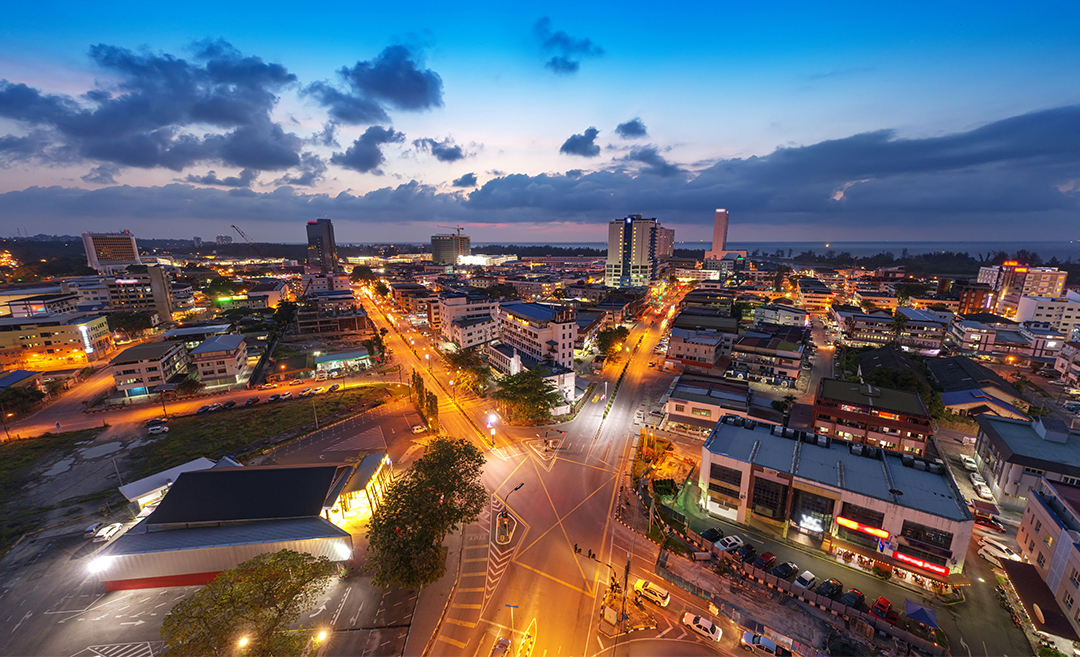Mention Sarawak, and most people will immediately think of or mention Kuching. If it’s in the context of delicious food, even more so, you’ll hear about all the recommended spots in the capital. But culinary surprises await in the quieter parts of this East Malaysian state, like in Sibu and Mukah. Raw and pioneering, both these lesser-known towns offer different experiences, which are more educative and eye-opening.
So, if you find yourself itching to explore more of Sarawak, particularly Mukah and Sibu, here are some recommendations from Chef Karen Yap. For those who can’t travel to that part of Malaysia yet but itching to taste some of these Sarawakian towns’ best dishes, sign up for Ethnic Sarawak Night’s Food Trail series – Sibu Mukah edition, hosted by Chef Karen Yap herself—more details at the end of this article.
Food in Mukah
Umai Mukah
Umai is to Sarawakian cuisine as ceviche is to Peruvians. A beloved “seafood salad”, this dish was born from the need of traditional fishermen to safely “cook” themselves a meal whilst out fishing on wooden boats.
Traditionally, umai is mixed with thin slices of fresh seafood, such as fish, raw cuttlefish, and sometimes even jellyfish, much like ceviche. The combination of seafood is lightly “cooked” with a citrus-based dressing; asam paya or calamansi, shallots, chillis, and other personal aromatics and herbs are often used. Located by the banks of Sungai Gigis, the Mukah Fish Market has umai in abundance.
Chef Karen’s recommendation: Mukah Fish Market, Mukah Umai King
Address: 19 Jalan Pasar, Bandar Baru Mukah, 96400 Mukah
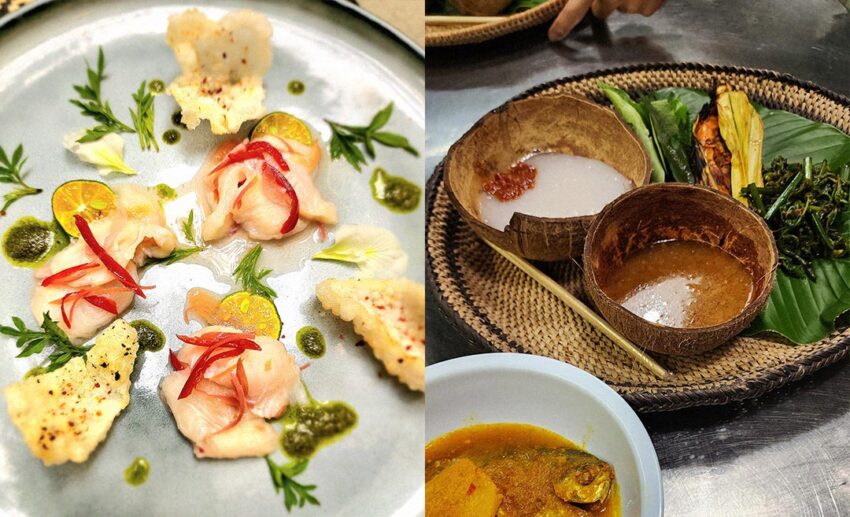
Linut
No other dish defines the influence of the Brunei Sultanate era on Melanau heritage cuisine more than linut, also known as ambuyat and the national dish of Brunei until today. A starchy staple of sago derived from the inner core of the Rumbia tree, it is cooked by a stream of hot, boiling water and vigorously stirred until white flour turns into a translucent, gluey consistency.
Most importantly, linut is often served at gatherings, such as family reunions, for friends and guests, all to be shared with laughter. Eating it is a bit of a dance—twirling at the end of a pair of bamboo candas and dipped into an array of intensely flavoured accompanying cicahs, lauks, and ulamans.
Chef Karen’s recommendation: Lamin Dana Cultural Boutique Lodge
Address: Telian Tengah, Kampung Tradisi, 96400 Mukah
Sago pearls
Masinah Sago Medong still employs traditional and manual methods for producing sago pearls. From preparing the ingredients the day before, rolling, and sifting the pearls to roasting them on the belanga (a traditional, wood-fired oven made of clay), making sago pearls is time-consuming, but the taste is worth the effort. Masinah’s take is also unique because it is made from coconut milk and kerisik (coconut that is grated, toasted, and ground). The size is also smaller than the sago pearls produced elsewhere.
Chef Karen’s recommendation: Masinah Sago Medong Enterprise
Address: Jalan Masjid Medong, 96300 Dalat
Paeh udang Balingian
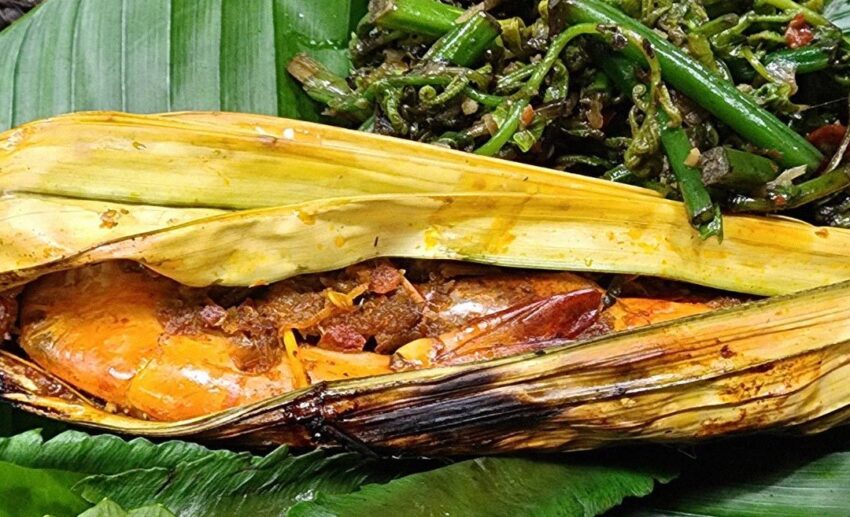
One of Balingian’s most sought-after heritage foods is paeh, as it is known in Melanau. More widely known as pais, it truly embodies the essence of Nusantara cuisine. The Melanau community borrowed and adapted it into a distinctive version and embraced it —a true sharing of culture. Paeh udang is a signature of Melanaus from the Balingian district.
An aromatic base is mixed with minced prawn and freshly grated coconut and flavoured with singkel, limau purut, and daun kunyit. The resulting rustic paste is then wrapped in daun tigoh or daun nipah and charcoal-fired until cooked.
Chef Karen’s reccomendation: Nurain Bt Abdullah
Address: Kampung Masjid, 96350 Balingian
Getting in & around Mukah
Getting there: The fastest way to get to Mukah is by flight, and according to Skyscanner, a return ticket can set you back RM541, which is, of course, based on information collected at the time of research. All flights to Mukah require connecting flights, and the most common routes require a stop at either Kuching or Sibu. There is also an option of flying into Miri and driving to Mukah. Skyscanner recommends booking for February 40 days before your intended trip for cheaper flights to this town.
Getting around: To explore this sleepy coastal town with complete freedom and accessibility, we suggest researching and hiring a car during your trip.
Other attractions to visit: For a live museum experience, make a pit stop at the Melanau Cultural Centre in Lamin Dana, where you can immerse yourself in the Melanau culture through traditional crafts, dances, costumes, and musical instruments. Why visit a coastal town if you’re not going to check out its seaside attractions? Mukah Beach is not to be missed if you love the sea. For ancient Melanau artefacts and antiques, spend some time at Sapan Puloh Melanau Museum. There’s also Dalat to explore, including its Chinese temple, The Kelidieng (ancient tree), St. Bernard’s RC Church, and more.
Editor’s note: While Mukah may not have much nightlife to rave about, it certainly makes up for it with its food and scenery. So, we suggest soaking in the beautiful sights and treating your palettes with delicious, fresh seafood when visiting Mukah.
Food in Sibu
Kompia
The Foochow population makes up about 40% of Sarawak’s total, so it is no surprise that the town is famous for its kompia. Originally made from simple ingredients, including flour, yeast, and salt, this traditional Foochow version of a classic bagel is a must-try for those travelling to Sibu.
These small, flat pastries are chewy with a crispy crust, and it’s simply hard to resist returning for seconds! Back in the day, kompia had no fillings, but the recipes have evolved over time and now consist of meaty stuffing.
Chef Karen’s recommendation: Sheng Kee 63 Confectionary
Address: 52g, Jalan Market, Pekan Sibu, 96000 Sibu, Sarawak
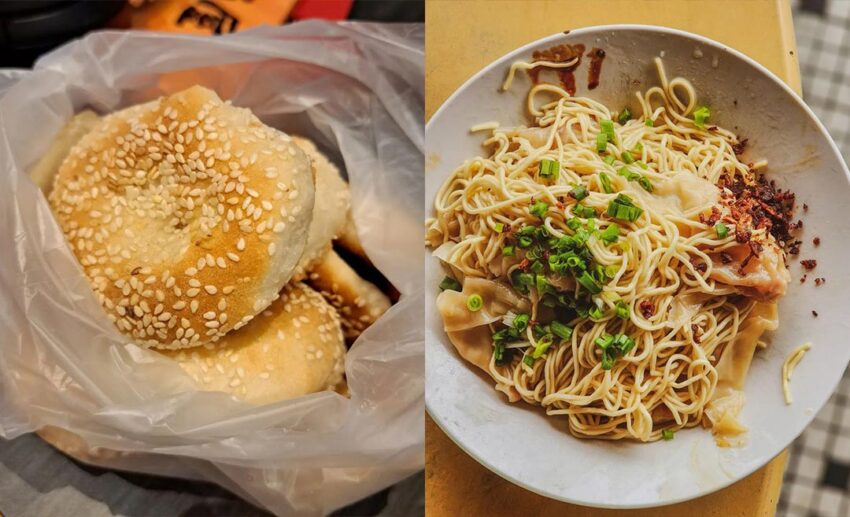
Kampua
Sibu is the birthplace of the renowned kampua mee, a Foochow-originated dish defined by the springy bounce of its noodles. It is also the number one breakfast dish for the Foochows. Fun fact: The words ‘dry mixed noodle’ sound a lot like ‘dry plate noodle’ in the Foochow dialect; thus, the name kampua stuck. It is typically served on a plate instead of a bowl.
Classically, the dish is served ‘white’, tossed in fragrant scallion oil and seasoning, with slices of char siew and blanched mustard greens. A typical kampua stall will also serve a side order of Bien Nyuk; see the next chef’s recommendation.
Chef Karen’s recommendation: Best Harvest Cafe
Address: No. 6A, Lorong 2, Jalan Aman, 96000 Sibu
Bien nyuk
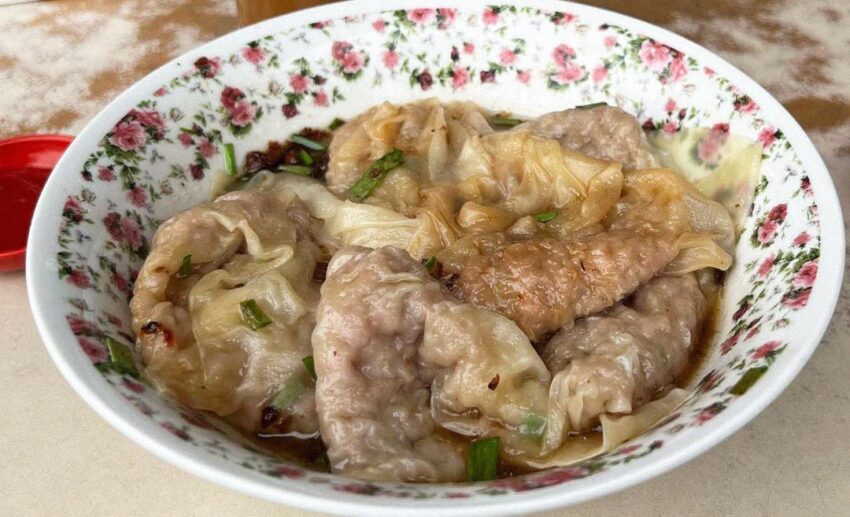
The Foochows’ version of a wonton is known as bien nyuk. The differentiating factor is in its filling. Bien nyuk is typically made wholly with minced pork or chicken, unlike wonton, which normally has a mixture of pork, fish, or prawn fillings. This dish is also almost always ordered alongside a bowl of kampua.
Chef Karen’s recommendation: Soon Hock Cafe & Restaurant
Address: 55-59, Jalan Dr. Wong Soon Kai, Taman Seduan 8, 96000 Sibu
Getting in & around Sibu
Getting there: Getting to Sibu is most accessible and fastest by flight, and depending on when you book, the fares can be as low as RM193, and direct flights will be 2 hours and 4 minutes away. According to research and data by Skyscanner, the best time to travel to Sibu is around July.
Getting around: To explore Sibu, you can do so by bus, taxi (although some can be non-metered), e-hailing apps, or, best yet, by car.
Other attractions to visit: There are so many places to visit in Sibu, and for a complete list, we suggest checking out Visit Sibu’s website. However, one notable must-see is Lin’s Swan Garden, where a beautiful swan statue faces southward for prosperity; the surroundings are the 12 zodiac animals. The Bawang Assan Iban Longhouse is great if you want to look into longhouses that predate the 18th century. Other places worth visiting are the Sibu Heritage Walk, Bukit Cup Jubilee Park, Sibu Night Market, and Sibu Central Market.
Nightlife in Sibu
Depending on what you’re looking for, Sibu’s nightlife is upbeat, eclectic, and diverse. For those who prefer a cafe setting, check out The Coffee Code, where you can enjoy in-house roasted coffee, pastries, cakes, and usual cafe staples. Sibu loves its night markets, and if you ever visit this town, check out Sibu Night Market on Jalan Market. The local food vendors here will satisfy, so come with an empty stomach. Our TikTok-ers recommend Street Bistro Sibu and Kaban Lama for a more pub-like setting.

